Lessons From 6 Kickass Pre-Order Campaigns (eCommerce)


-Blog-Covers-Duo-tone.webp)
There’s customer need and then there’s customer interest.
In eCommerce sales strategies, the latter finds an ideal landing board with pre-order marketing.
While it’s not a silver bullet that will ease most conversion issues, done well, it’s still one of those targeted hacks that can bring in high-intent buyers to your doorstep.
And that’s why in this piece, we will cover some significant areas on the subject including:
4 Key Steps to Nail eCommerce Pre-Orders in 2025
6 eCommerce Brands that Use Pre-Orders to Drive Conversions (+ Tips to Copy)
How to Design Email Pre-Order Campaigns
When to Launch a Pre-Order Campaign
While an eCommerce pre order strategy can really add to the whole marketing mix, it’s important to ensure your business meets certain conditions for it to be successful:
Too early can potentially make shoppers feel bored and out of touch with their original desire to pre-order.
Too late and you run the risk of a sudden influx of orders that your fulfilment process can’t possibly meet.
Typically, a gap of 4-8 weeks between pre-ordering and delivery is ideal.
While many unique products fall under pre-order territory, there’s still an additional pricing incentive that shoppers demand or expect.
It’s the pre-order pricing benefit that can make all the difference before your brand announces a different price to the rest of the world.
This is why successful pre-orders often include exclusive early-bird pricing, limited edition variants, or bonus items that make the wait worthwhile for customers.
This includes mobilizing a robust inventory system that tracks incoming stock, available inventory and matches them to existing pre-orders and ones happening in real-time.
It also involves keeping shoppers at the heart of the communication process — letting them know of exact shipping dates, any possible delays and being very clear about cancellations & refunds.
Use pre-orders as a market research tool to test price points, feature preferences, and overall demand before investing in large-scale production.
This aspect also makes the pre-order strategy just the right fit for scientific strategies like urgency to be put into place.
Track shopper behavior when explicit messages like “Only 2 left in stock” appear versus when there’s just a big-picture date for pre-orders to stop.
Further Reading: Marketing Lessons from 10 Great DTC Brands
Pre-orders in eCommerce can potentially be a hit-or-miss affair, but not if you understand the fundamentals clearly.
This is why we’ve picked 6 brands to study, who with their campaigns and marketing approach, have made this strategy tick AND sell!
Whoever believes pre-order marketing is a one-time wonder didn’t hear about how sports lifestyle brand Togethxr nailed it.
It’s an eCommerce brand that stemmed from a conglomerate of founders including Alex Morgan, Sue Bird and Chloe Kim alongside co-founder Jessica Robertson. The brand combines merchandising, selling and being a platform that supports & applauds women in sports.
The brand turned the usual narrative of “no one watches women’s sports” on its head by promoting “Everyone Watches Women’s Sports,” which in time has become the slogan Togethxr is known for.
It all began when co-founder Jessica Robertson took to Instagram as an influencer and created a story to push the “Everyone Watches Women’s Sports” line of merchandise. It caught on like wildfire and the brand was able to sell 1000 units in 10 hours.
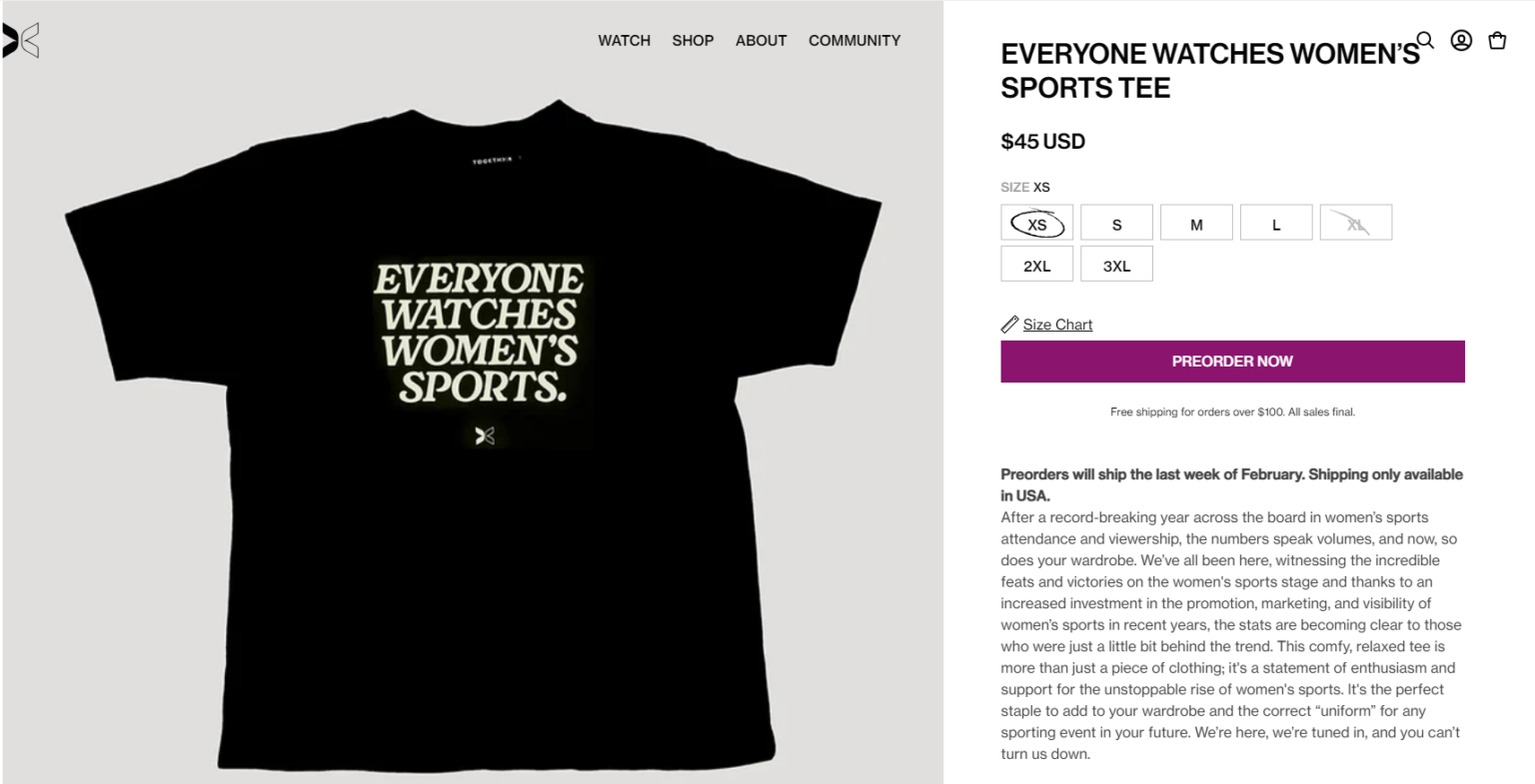
What’s even better is that the brand continues to enter into strategic partnerships (this time with Nike) to breathe more fire into their anthem, and in a way, continue with the momentum that the original pre-order window had created:
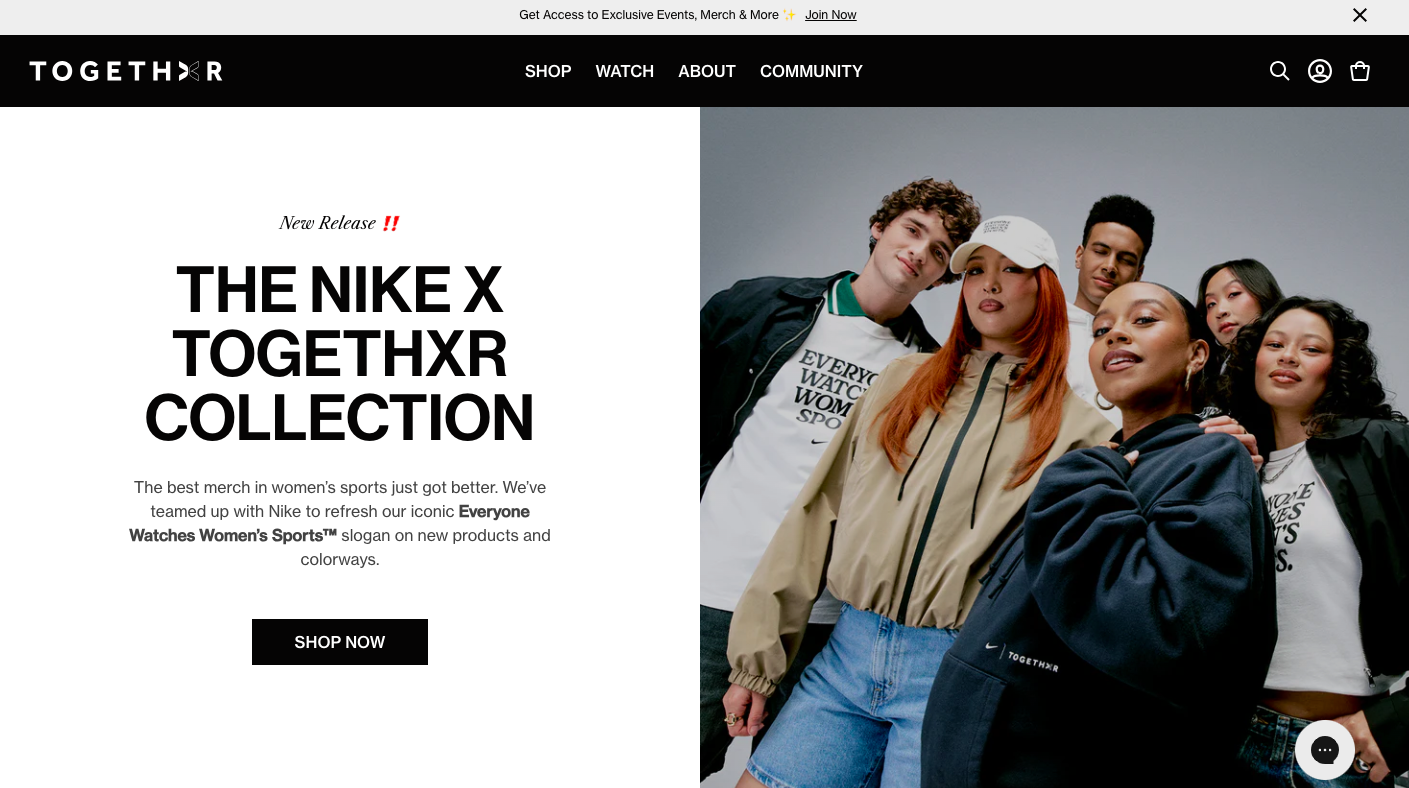
A deeper look at the massive momentum, and you’ll be sure to see why Togethxr’s brand of pre-order marketing worked:
👉 Setting up of the pre-order now function FAST
Within 10 minutes of Jessica Robertson taking to Instagram, the brand had onboarded Shopify’s Pre Order Now app for faster traction — is it then any wonder that the brand saw 79 pre-orders within the first 20 minutes?
👉 A multi-channel content strategy
The brand bases this on powerful, authentic and relatable messaging that covers how far women’s sports have come and also how far they need to go. They rely on their “mission” to flavor content across their socials, website and even cross-brand collaborations.
Key Takeaway: Togethxr has created a movement with their mission-based messaging, and ensured their pre-order strategy reflected this by the speed, timing and virality.
Further Reading: 34 Ways Online Sports Stores Can Boost Conversions
Haus, a low-ABV brand, established itself as a small batch maker, and well, that seems to really serve their pre-order strategy from time to time. What do shoppers love the most?
Unlike traditional alcohol brands that have to navigate all kinds of legal scenarios for doorstep deliveries, Haus just does it like any other eComm brand.
What helps the brand fly is that they’re clear about their limited product stand, and even promotes deals with that as a core focus:
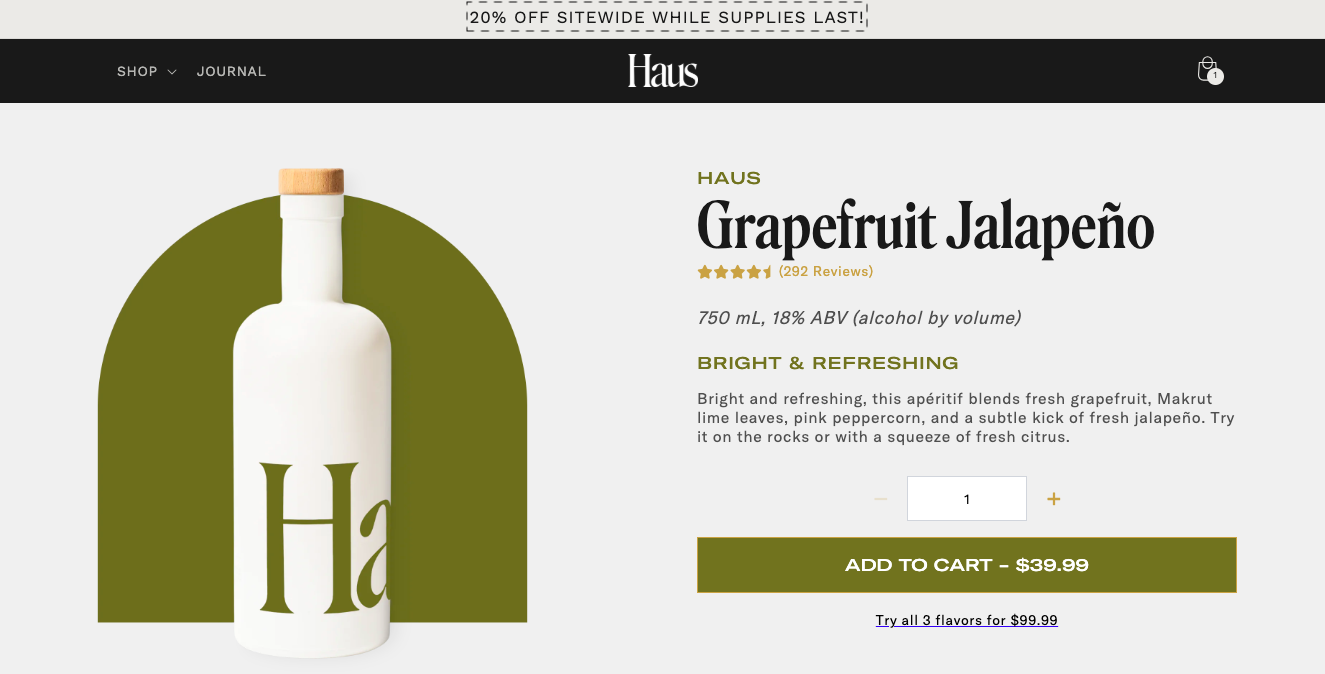
Haus also supercharges their pre-order marketing approach with strategies like launching new flavors and making certain products limited edition. Combined with their easy doorstep delivery model, this is highly compelling for shoppers who’ve had a great experience with the brand.
Let’s talk about the time when the brand’s super popular $40 sampler kit kept going out of stock — and every time shoppers who just missed out by a whisker were put into the subsequent pre-order waitlist. The genius stroke Haus played here was to fall back on paid PR & advertising to create the buzz when restocks did happen.
For example, New York Post ran a story on how Haus’ $40 sampler kit was now back in stock after selling out for 4 times (and for good measure, even added a CTA to the post):
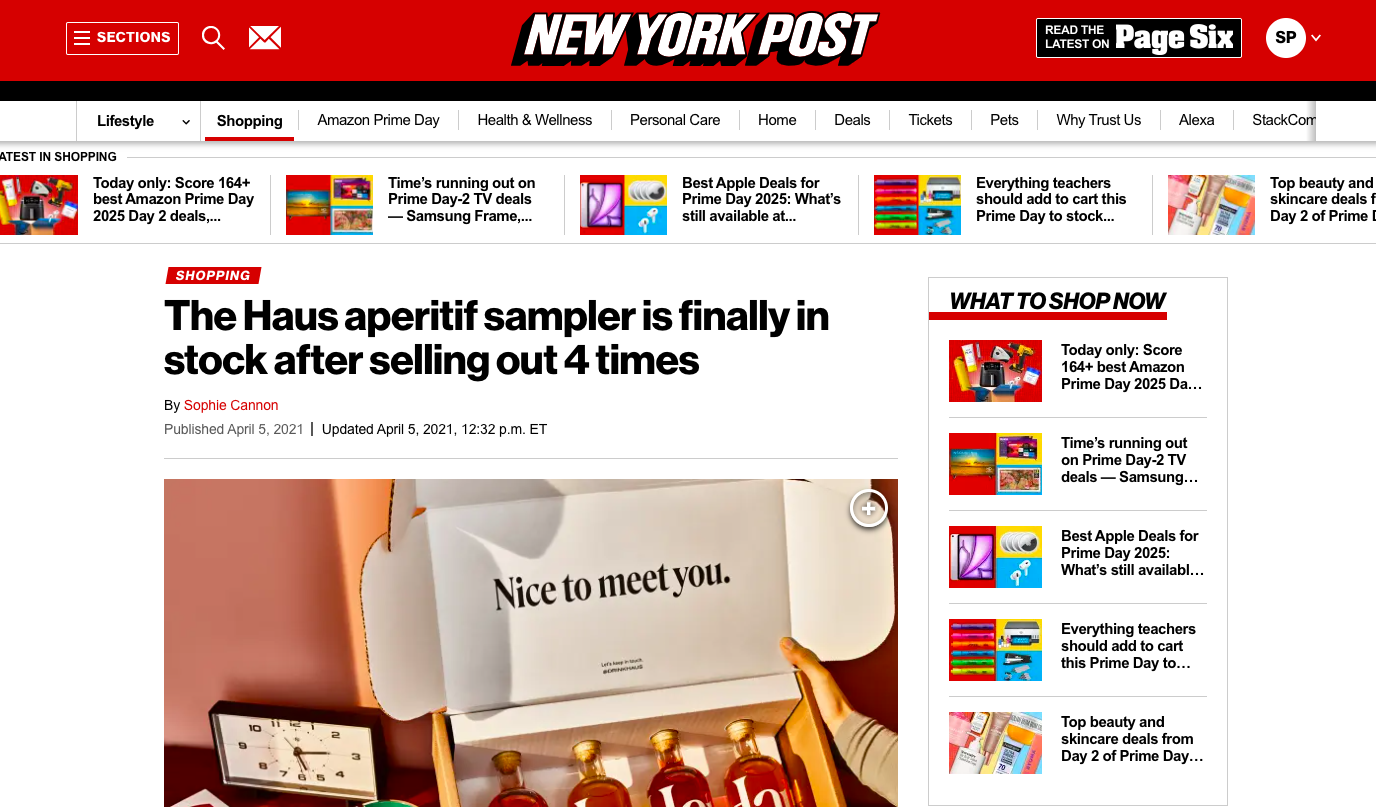
Over the years, here’s what Haus has done to keep their pre-order campaigns highly compelling:
👉 Exclusive pre-order rates for members
Haus has been straight smart about including the pre-order strategy within their membership, allowing members to enjoy pricing of $36 per bottle if they buy 2+ bottles or $32 per bottle if they buy 6+ of them.
These perks also inspire more people to consider their loyalty program.
👉 Curated events that build hype
With a super genuine interest to impact the different segments of a beverage-drinking audience, Haus has been committing itself to create “community” through meaningful collaborations — for example, during COVID, they tied up with 9 different restaurants for The Restaurant Project, creating unique limited edition flavors that these restaurants could set up for pre-order.
100% of the benefits went to the restaurants to pay their bills and employees. And the traction gained by Haus was HUGE!
Key Takeaway: A mix of innovation, scarcity, community and paid coverage ensure Haus is able to attract a lot of attention to their limited editions and pre-orders.
Further Reading: 33 Ways To Grow F&B eCommerce Sales (+ Real-World Examples)
Sustainable skincare brand EOS garnered a lot of interest when in 2021, TikTok influencer Carly Joy went live with a powerful tutorial, calling it “bless your f*cking cooch.” Understandably, it went viral and it is from this standalone event that the Cooch Blessing Cream pre-order marketing strategy was born.
EOS saw an instant opportunity in Carly’s candid approach and designed a single batch edition of Cooch Blessing Cream. In turn, Carly shared an unboxing video of this edition to her 150k strong fan base, triggering a massive amount of interest.
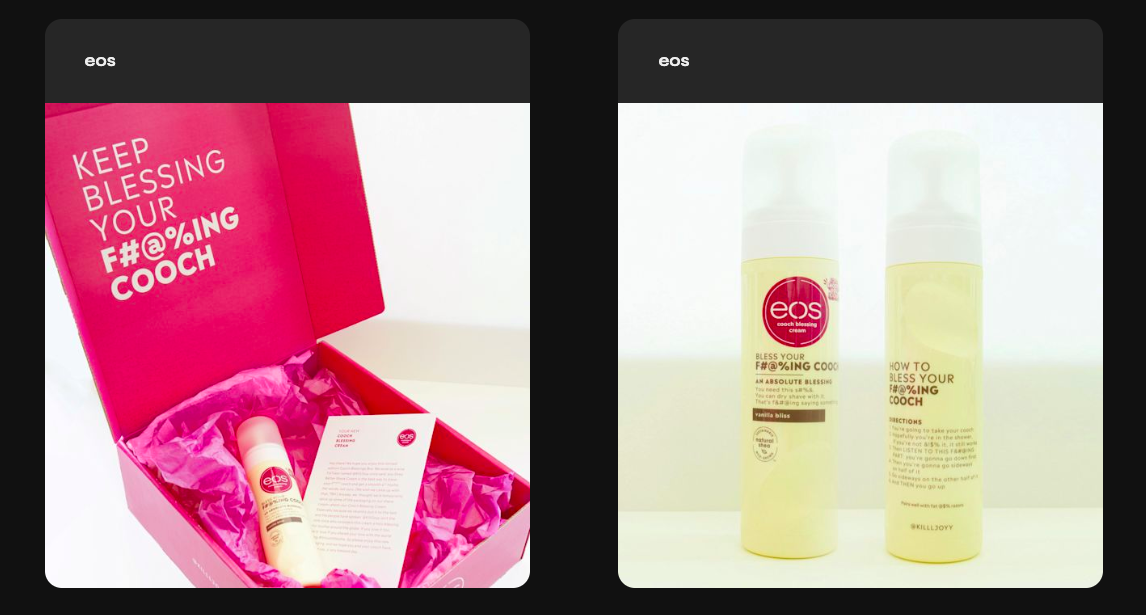
This then led to EOS creating a proper product line, which had a predominantly influencer video-led release and sold out really quickly.
But this eCommerce pre-order campaign had a more far-reaching effect on the brand from various other angles:
So, what were those key pieces of this pre-order strategy that’s worth rounding up?
👉 Collaborative social amplification
A key reason why the Cooch Blessing Cream pre order strategy worked like a charm is because EOS wasn’t just banking on Carly Joy’s TikTok presence. The brand helped amplify the virality that had been created with additional paid marketing efforts.
👉 A super-quick single batch limited edition
EOS literally lost no time in leveraging the potential of the Carly Joy collab and coming up with a super limited edition to promote exclusivity & urgency amongst takers.
Key Takeaway: Piggyback on influencer marketing success that may open up unexpectedly, and see it as a long-term opportunity to grow your business!
Further Reading: TikTok eCommerce: 40 Brilliant Ideas (With Examples) For 2025
Innovation-led eComm brand GlowForge is known for coming up with product offerings that stand out distinctly in the laser market.
But this comes with a caveat: the brand doesn’t always know if a brilliantly designed product will still find takers. In fact, this is what the brand had to grapple with when they were trying to come up with a 30-day pre-order strategy for their 3D Laser Printer.
Before the brand hit “go” on pre orders, they realised they would have to take a closer look at audiences who would easily take to this strategy.
It included:
It became clear that GlowForge’s pre-order marketing strategies had reaped most benefits across paid channels, specifically Google AdWords and Facebook Advertising.
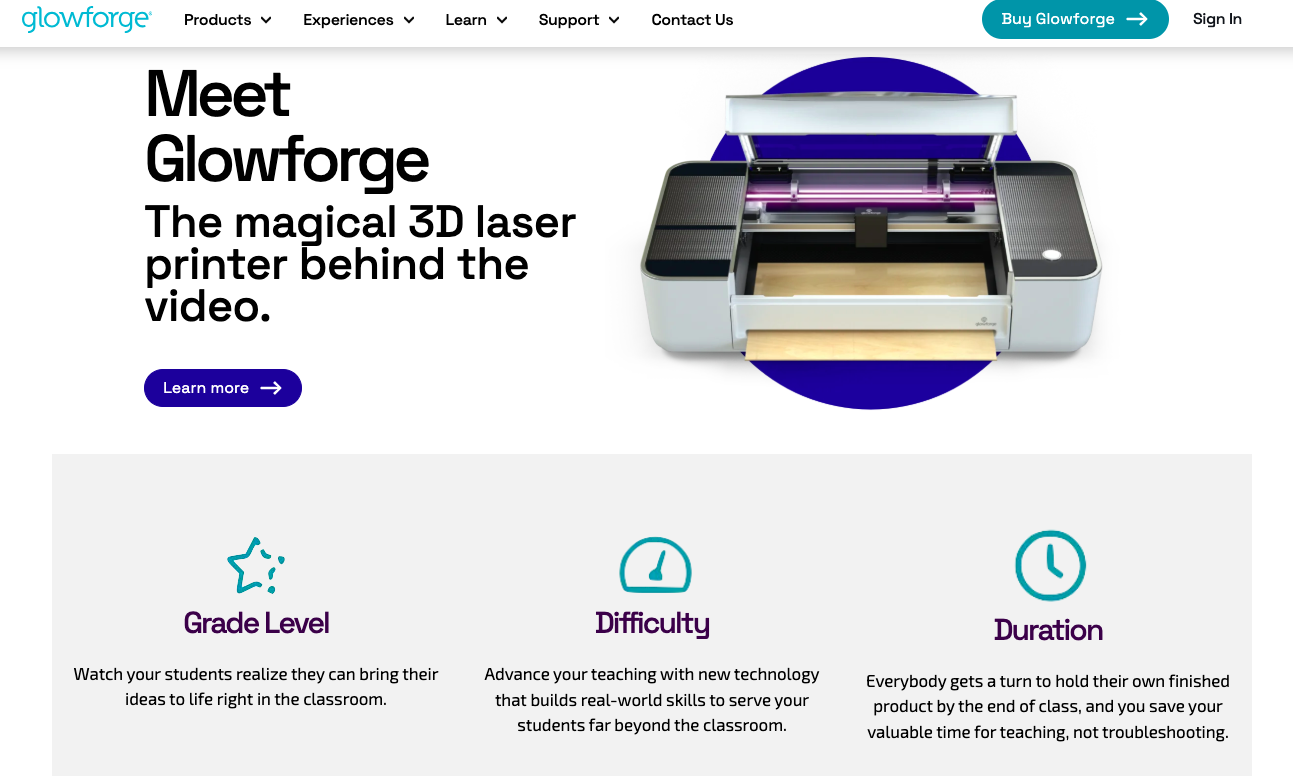
And the brand decided to half the original price for whoever went for a pre-order instead of a later buy:
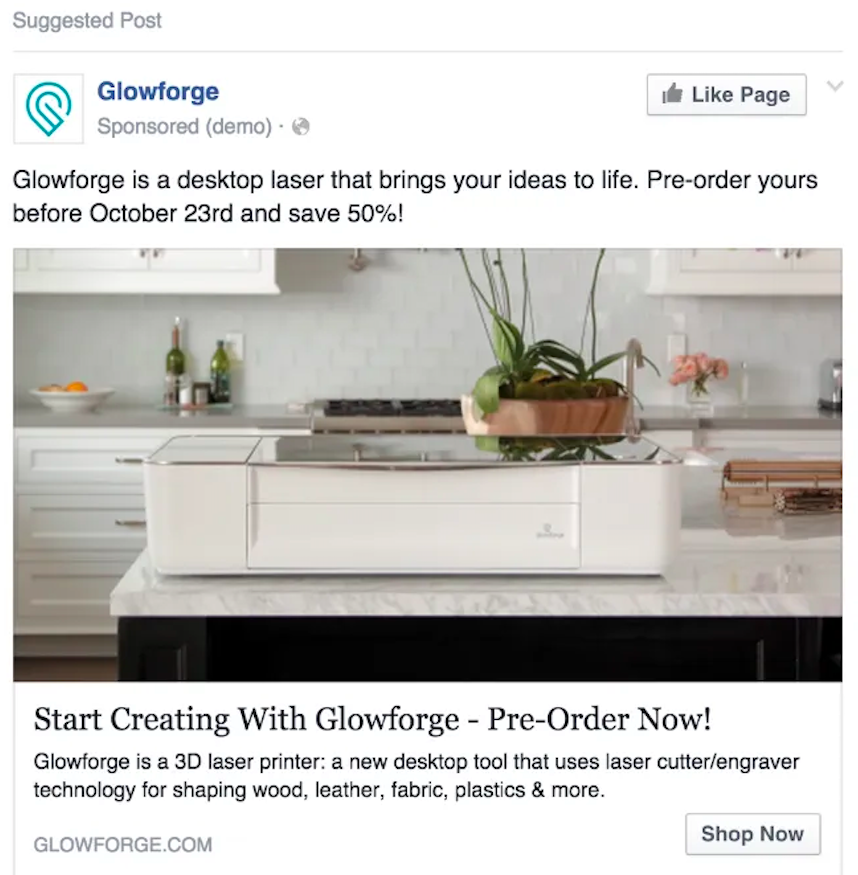
But what is it that made audiences sit up and take notice?
👉 A Facebook Lookalike audience targeting strategy
The idea was to reach out to people with ads who were very similar to those who had pre-ordered products from GlowForge before.
This let them zero in on shoppers at scale, even if they didn’t have first-hand customer insights on them.
👉 An intent-based marketing & remarketing strategy for Google
With AdWords, the brand decided to target traffic that had been generated through GlowForge’s extensive press coverage.
This helped them zero in on high intent, capitalizing on super specific keywords. On the other hand, they saw potential in some visitors more than others, and decided to remarket through Google Display Network ads — helping them take a second look at the pre-order item if they visited the site once, expressed interest but didn’t buy.
Key Takeaway: Internal brand research and external market research can come together to offer pre-order strategy insights for eCommerce brands.
Further Reading: 26 Secrets to Running Successful Facebook Ads (For eCommerce Stores)
When it comes to eCommerce pre orders, the conversation naturally turns to hi-tech brands that are unsure of how their offerings will sell — and yet have to figure out how to sell them.
In 2015, when Mellow, a sous vide oven brand began its journey, it had to differentiate clearly from competitors like Annova and Delta. Fast track to 2017, the brand was ready to re-establish itself in the niche as a hybrid appliance.
Though delivery times got delayed on several occasions, the Mellow pre-order process still came out as a winner because of what the hybrid appliance would potentially do for its buyers.
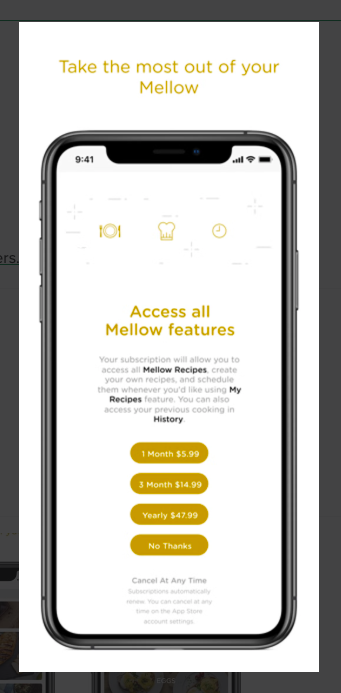
It’s the tech behind the product (which even received 6 updates) that made it worthwhile for audiences who were ready to wait a long time to receive their shipments (deliveries finally began in 2017.)
For one, it came with a smart in-app chef assistant, had a clean 30-second setup and also had refrigeration capabilities — so what specifically worked for their pre-order marketing?
👉 A relatively reasonable downpayment of $100
This tiered payment plan was easy on the pocket for a lot of different segments, whether it was a first-time sous vide trier or someone more seasoned. The deposit also was a win-win because it increased the stakes for shoppers (because they’d paid up, they wouldn’t just cancel their pre order) and for the business (helped them crowdfund and get the product ready).
👉 A clear pricing advantage for early adopters
Whereas the retail price was initially fixed at $599, those who pre-ordered had to only pay a total of $399. Mellow clearly stated this in their communication, driving real urgency for people with high buying intent.
Key Takeaway: Create a strong incentive for early adoption even if your eCommerce brand plays in a super-specialized niche — for Mellow it was all about creating a pathbreaking product and riding it out with a price that was special for early adopters.
Further Reading: eCommerce Pricing Strategy: 13 Standout Brand Examples
Pre-orders can be a gamble but not unless an eCommerce brand centers its core strategy on creating more tangible value for shoppers.
That’s exactly what Pokémon Center did with their Pokémon Scarlet & Pokémon Violet Double Pack pre-order game plan.
As the official retail and online hub for all things Pokémon, Pokémon Center sells plushies, apparel, TCG products, accessories, and game bundles.
One of the strongest points of this pre-order marketing strategy was that Pokémon Center ensured certain regions (those that have more buyers) receive differentiated physical incentives like Pikachu promo cards and art books.
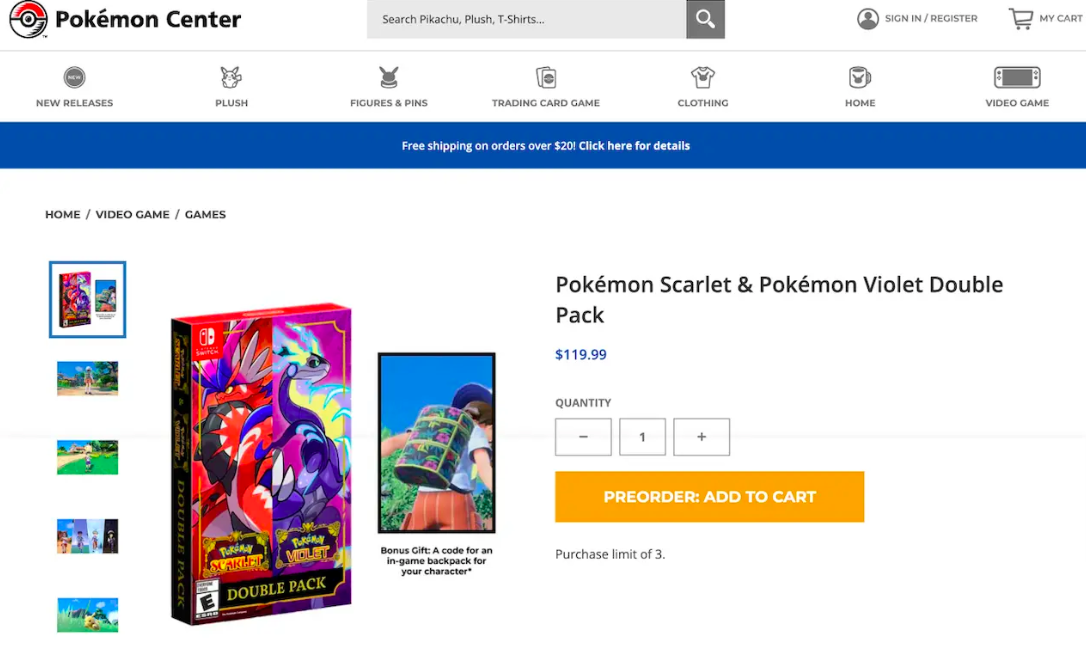
However, there were several points around which the Pokémon Scarlet & Pokémon Violet Double Pack pre-order was a great success:
👉 Exclusive pre-order in-game bonuses
Every shopper that pre-ordered the double pack received two exclusive codes — each code gave access to an in-game accessory (a backpack a character can wear within the game). Since this was available only within the pre order window, Pokémon enthusiasts experienced real urgency.
👉 Version-specific regional incentives
In Japan and Singapore, pre-orders included an A5 artbook unique to the version (Scarlet or Violet), plus printed collectibles like Pikachu promo cards or steelbook cases. By offering unique items per game version, the store encouraged fans to pick sides—or buy both—creating collector behavior.
Key Takeaway: Tap clearly into audience desires & behavior to offer incentives that the eCommerce pre order strategy can piggyback on.
Further Reading: eCommerce Product Launch: The Most Comprehensive Guide Ever
Pre-order email campaigns are a distinct way to prime audiences towards conversions and create steady anticipation of the arrival of the order.
And this is why how you design the flow can have a lot of influence over shopper behavior:
👉 Building anticipation (6 weeks before dispatches begin)
This is the sneak peek stage where subscribers will feel something important is up but will only get glimpses of the picture. This is why emails on the lines of “something cool is brewing” or “we’re doing something we’ve never done” with behind-the-scenes content works so well at this stage.
Use subject lines that create curiosity without revealing everything - "The mistake that changed everything" or "Why we almost scrapped this project." The goal is building emotional investment through narrative rather than product features.
👉 Offering exclusive access (3 weeks before dispatches begin)
Segment your most engaged segments first and assess metrics like open rate and click-through rate to schedule the emails at this stage. Using strategic social proof at this stage can especially be helpful — bring in pre-order info from past campaigns like "customers who pre-ordered our last product said..." This leverages past satisfaction to reduce pre-order anxiety.
👉 Creating social momentum & scarcity (2 weeks before before dispatches begin)
Start building a sense of community at this stage. Location-based social proof can create momentum here with messaging like “50 people in Hartford, Connecticut have pre-ordered” and support it with pre-order snippets like “This product promises better sleep results than I could ever imagine — so yes I’m in!” Create gentle urgency around limited quantities or pricing and avoid aggressive countdown timers.
👉 Generating trust & reassurance through the final call (the week dispatches go live)
Address purchase anxiety directly. Include detailed FAQ sections, clear refund policies, and testimonials from people who've pre-ordered. Use subject lines that acknowledge the decision difficulty: "Still thinking it over?" or "What you're probably wondering about..." This phase is about removing friction rather than adding pressure.
Further Reading: 25 Email Marketing Tips to Increase Sales (+ Amazing Examples)
eCommerce pre orders need to be much more than a shot in the dark.
At best, they should amplify your brand and product strengths.
But for that to happen without glitches, you need to ensure using this only under the choicest circumstances, which include:
👉 Launching a brand new product: In this case, segment audiences to arrive at the most “warm” ones so that a short pre-order window brings in maximum traction. Consider the example of a DTC skincare brand launching a new serum and opening a 2-week pre-order window with influencer-led buzz and waitlist exclusivity.
👉 Catering to a captive & loyal audience: This is a pre-order scenario that works best for eCommerce brands that have strong email lists, repeat buyers, or creator-driven traction. Imagine a niche coffee roaster with engaged followers, pre-sells a limited micro-lot roast with “only 100 bags” and sells out in 4 hours.
👉 Managing SKUs as a bootstrapped brand: Especially where high-value goods like tech, furniture and home goods are concerned. Think of how a modular furniture brand takes pre-orders for a new product line with a 6-week ship window, validating demand before full manufacturing.
👉Doing a soft launch: This works especially well for new brands that may potentially be trying to beta test a new category before hard launching it. Pre-orders can show how early adopters take to the idea and the product associated with it — leaving behind data and feedback for a fuller launch later.
👉 Making available a limited edition product: The more emotionally driven or occasion-led this is, the better the chances of the limited edition flying off the shelves. Imagine a candle brand launching a a “Winter Solstice” scent available only by pre-order for 10 days.
Also read: Building A Kickass Pre-Sell Page: 11 Key Things To Remember
98% of visitors who visit an eCommerce site—drop off without buying anything.
Even when what they see is a highly exciting eCommerce pre-order awaiting instant action.
Why: user experience issues that cause friction.
And this is the problem Convertcart solves.
We've helped 500+ eCommerce stores (in the US) improve user experience—and 2X their conversions.
How we can help you:
Our conversion experts can audit your site—identify UX issues, and suggest changes to improve conversions.